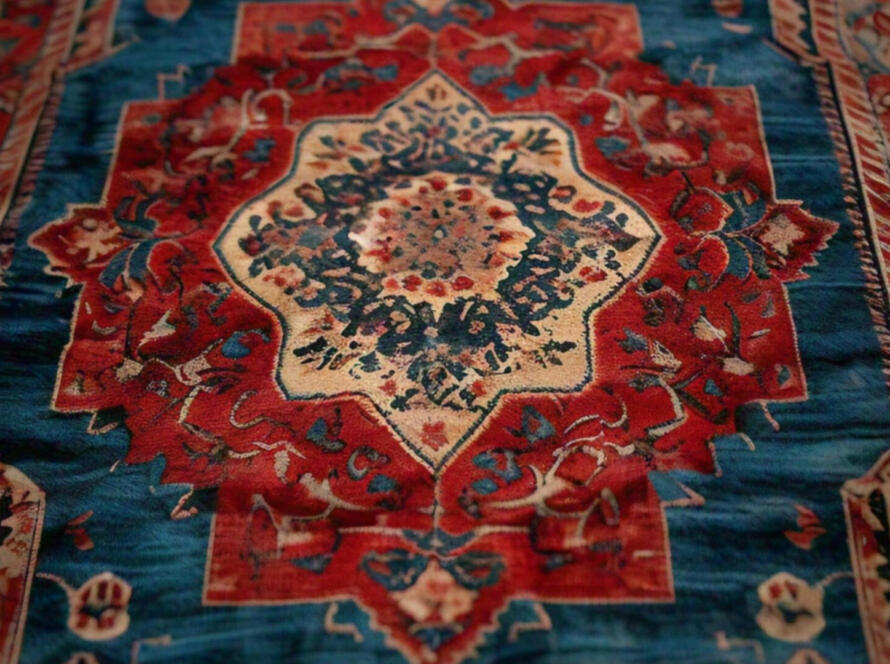Interior design may sound like an exclusive professional job which is too much for the common home. But, some aspects of home decor can be done by ourselves like layering rugs, to add that extra dimension to your home and create stylish surroundings, just by using some simple methods.
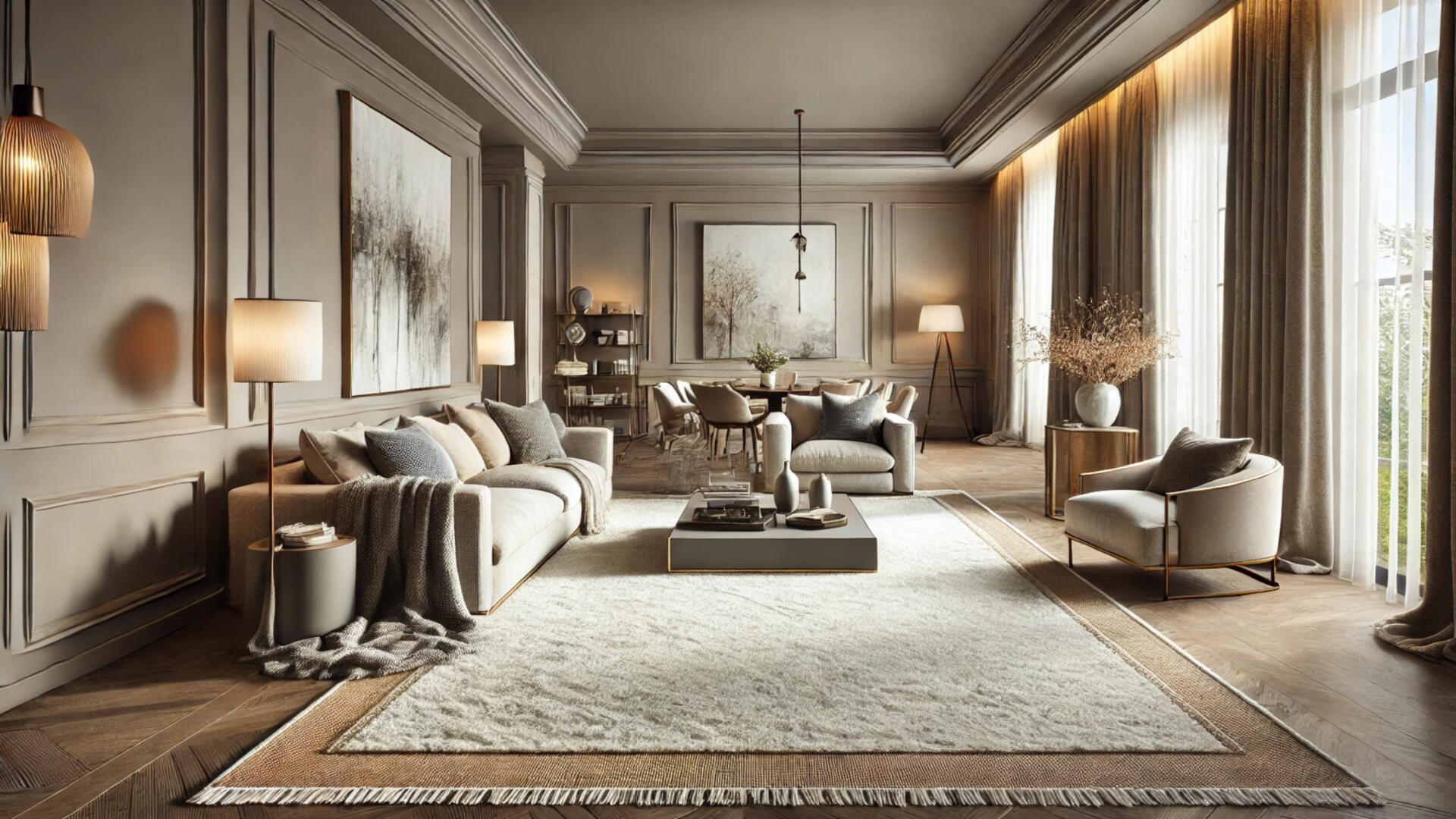
Here are 5 tips to elevate your home effortlessly:
Tip 1: Start with a Neutral Base
Choosing the Right Base Rug
The foundation of any well-designed room often begins with a carefully selected base rug. A neutral base rug sets the stage for the rest of your decor, providing a versatile backdrop that allows you to build and layer upon it with ease. It acts as a grounding element, offering a cohesive look and enhancing the overall aesthetic of the space.
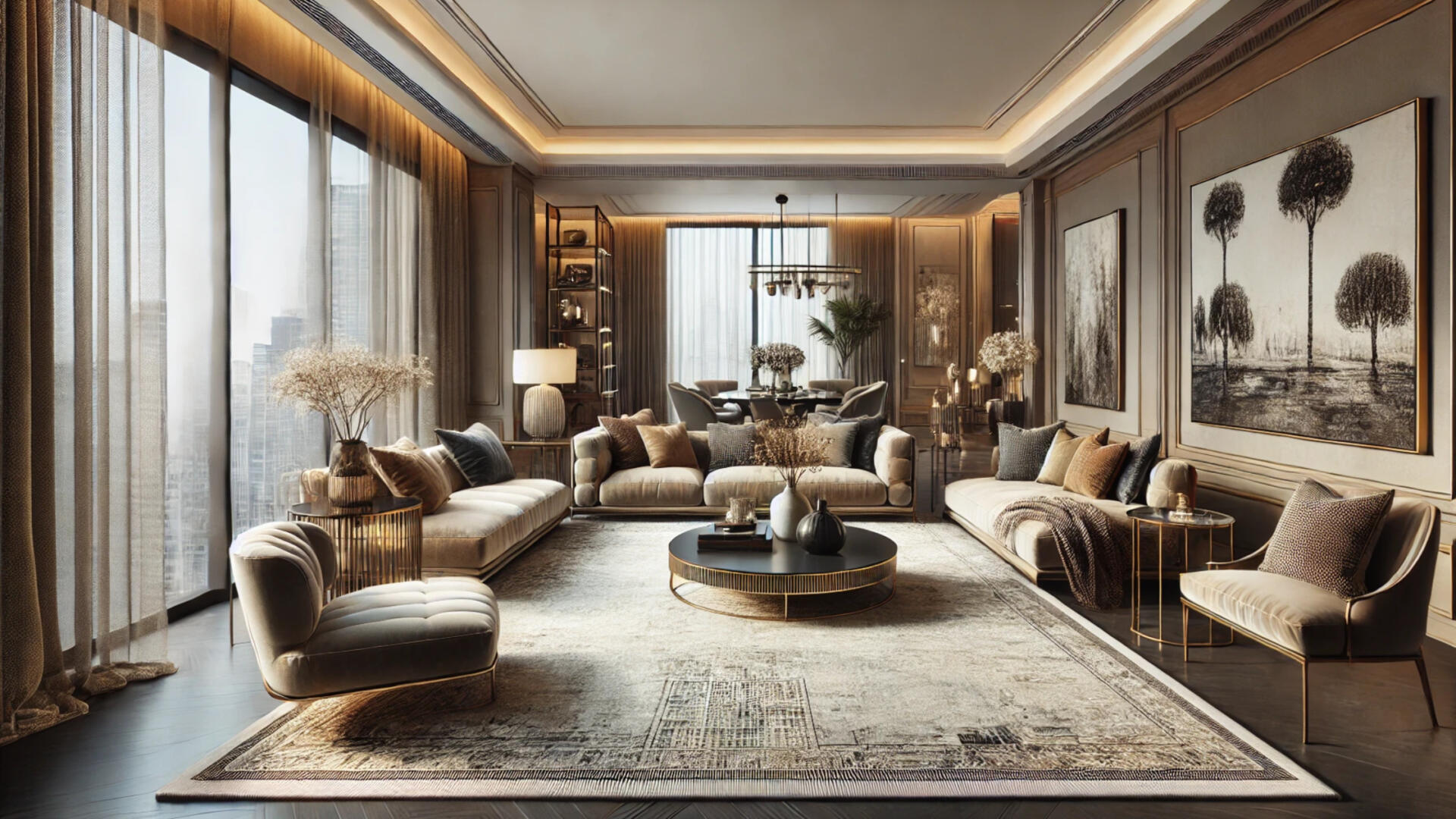
Importance of a Solid Foundation
A neutral base rug is crucial while layering rugs because it:
Establishes Balance
It creates a calm and balanced environment, preventing the space from feeling too busy or overwhelming.
Enhances Flexibility
With a neutral base, you have the flexibility to experiment with different colors, patterns, and textures in your furniture and accessories.
Timeless Appeal
Neutral rugs tend to have a timeless quality, ensuring your decor stays relevant and stylish for years to come.
Focus on Accents
By providing a subtle background, a neutral rug allows your statement pieces and accents to shine without competing for attention.
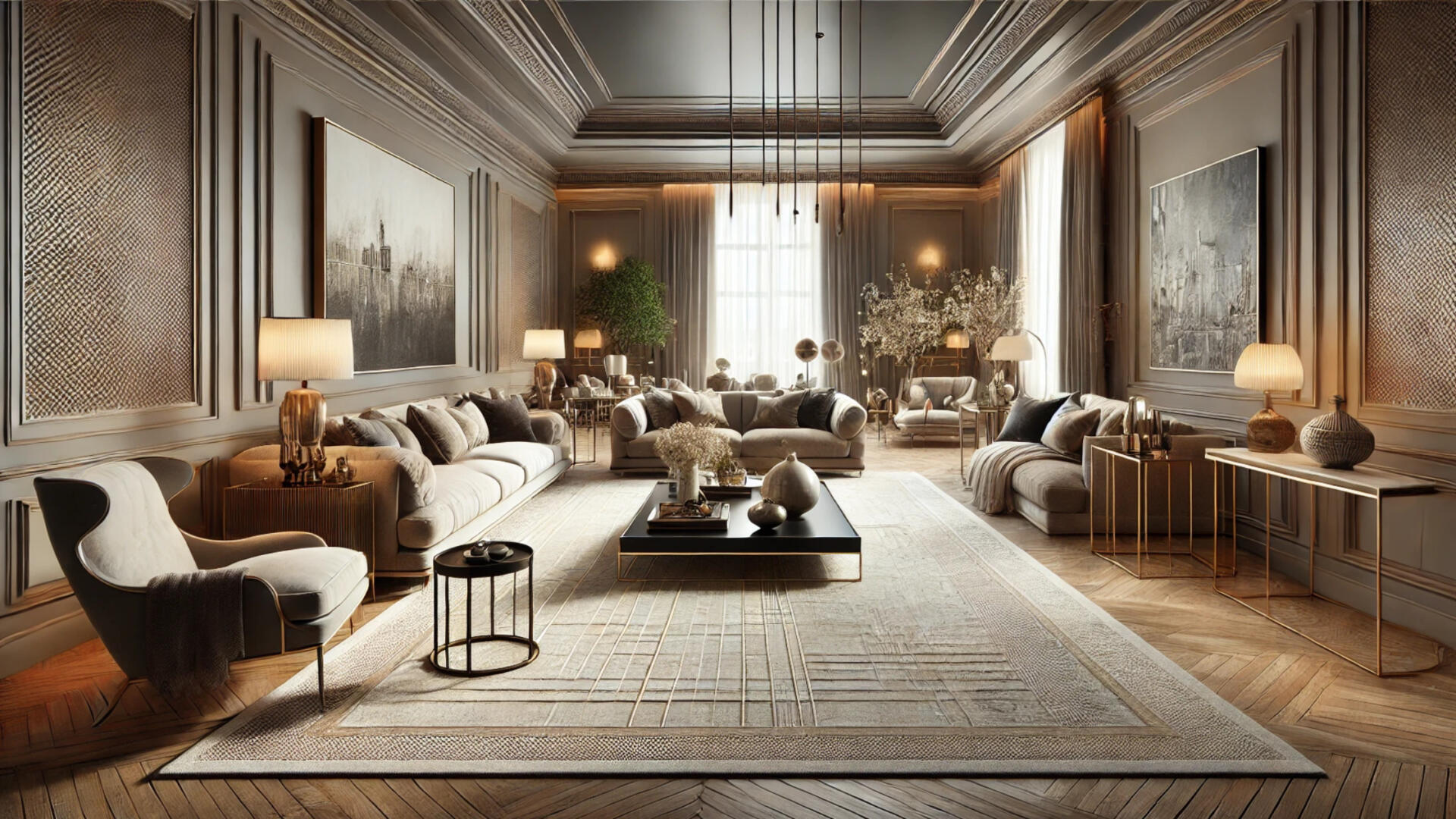
Examples of Neutral Base Rug Designs
Jute Rugs
Jute rugs offer a rich, natural texture that adds warmth and organic charm to any room.
Typically in shades of beige, tan, and soft browns, jute rugs are inherently neutral and blend seamlessly with various color palettes, while layering rugs.
They are sturdy and durable, making them ideal for high-traffic areas.
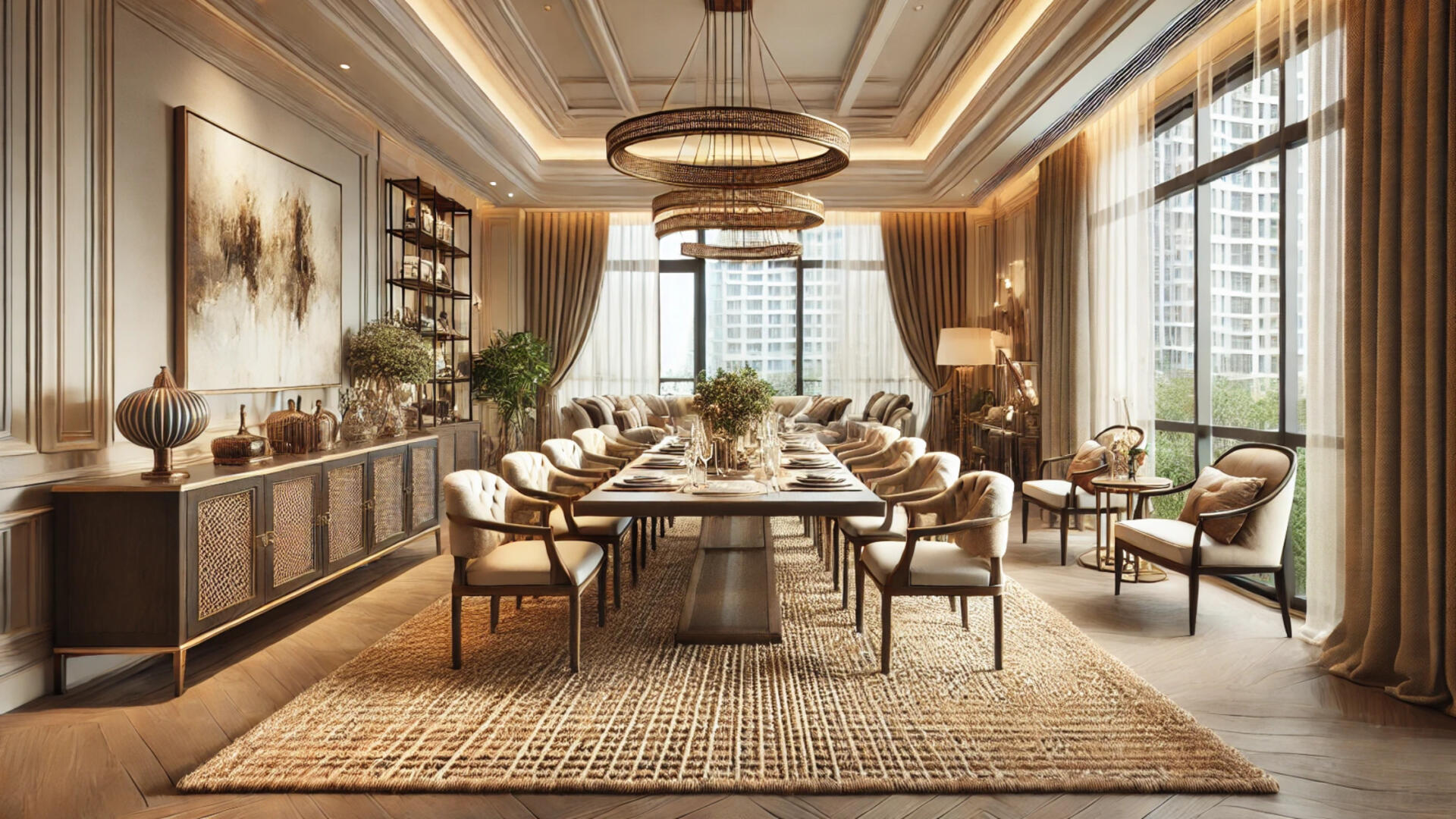
Sisal Rugs
Sisal rugs are known for their tight weave and coarse texture, providing a distinct, sophisticated look.
Available in natural hues like sandy beige, cream, and light brown, sisal rugs maintain a neutral and understated presence. Sisal is highly durable and resistant to wear, suitable for busy households.
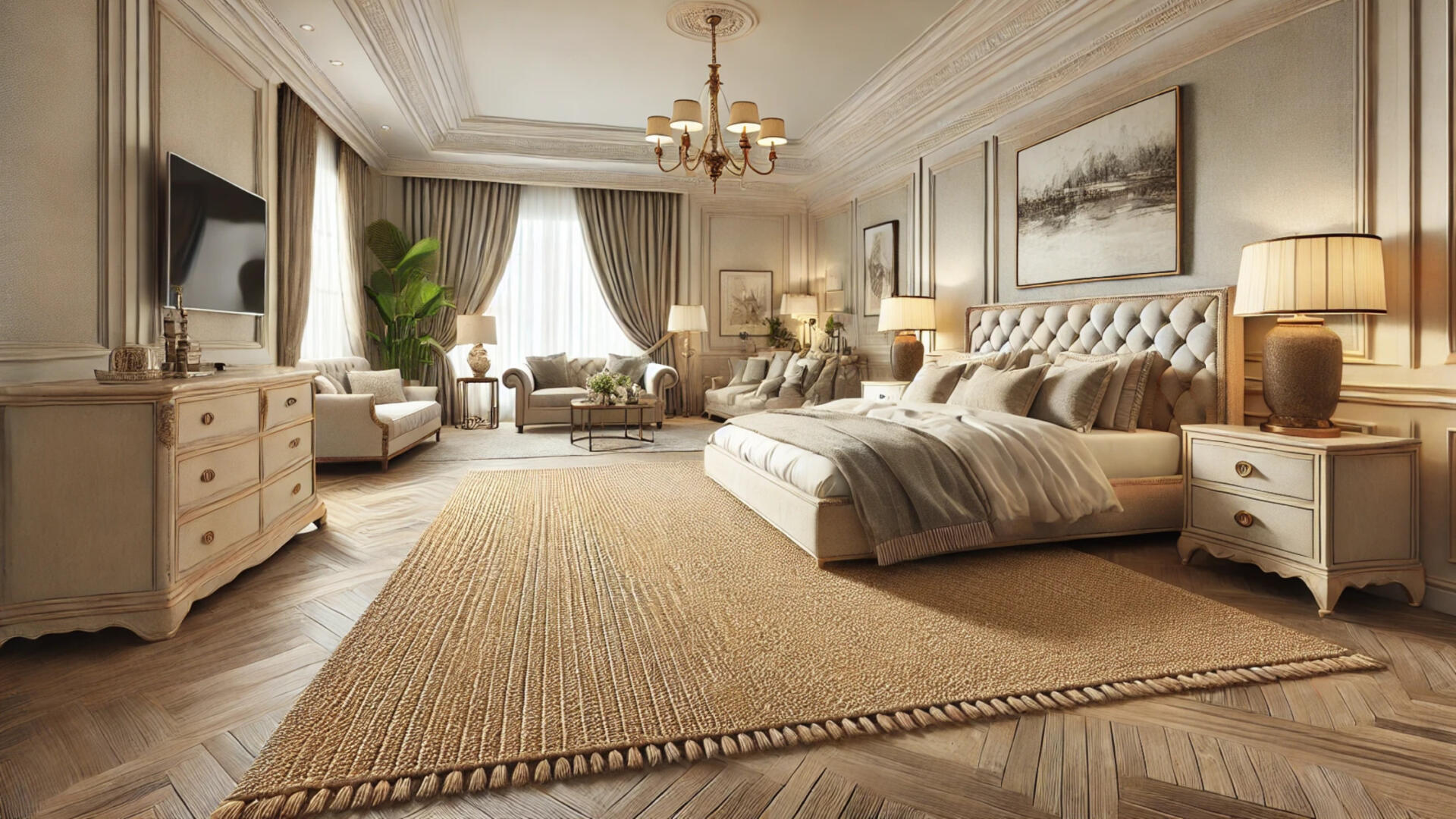
Wool Rugs
Wool rugs are soft and plush, adding a luxurious feel to any room. They come in various neutral tones such as ivory, grey, and taupe, making them versatile and easy to coordinate with other decor elements. Wool is naturally stain-resistant and resilient, ensuring the rug looks good for a long time.
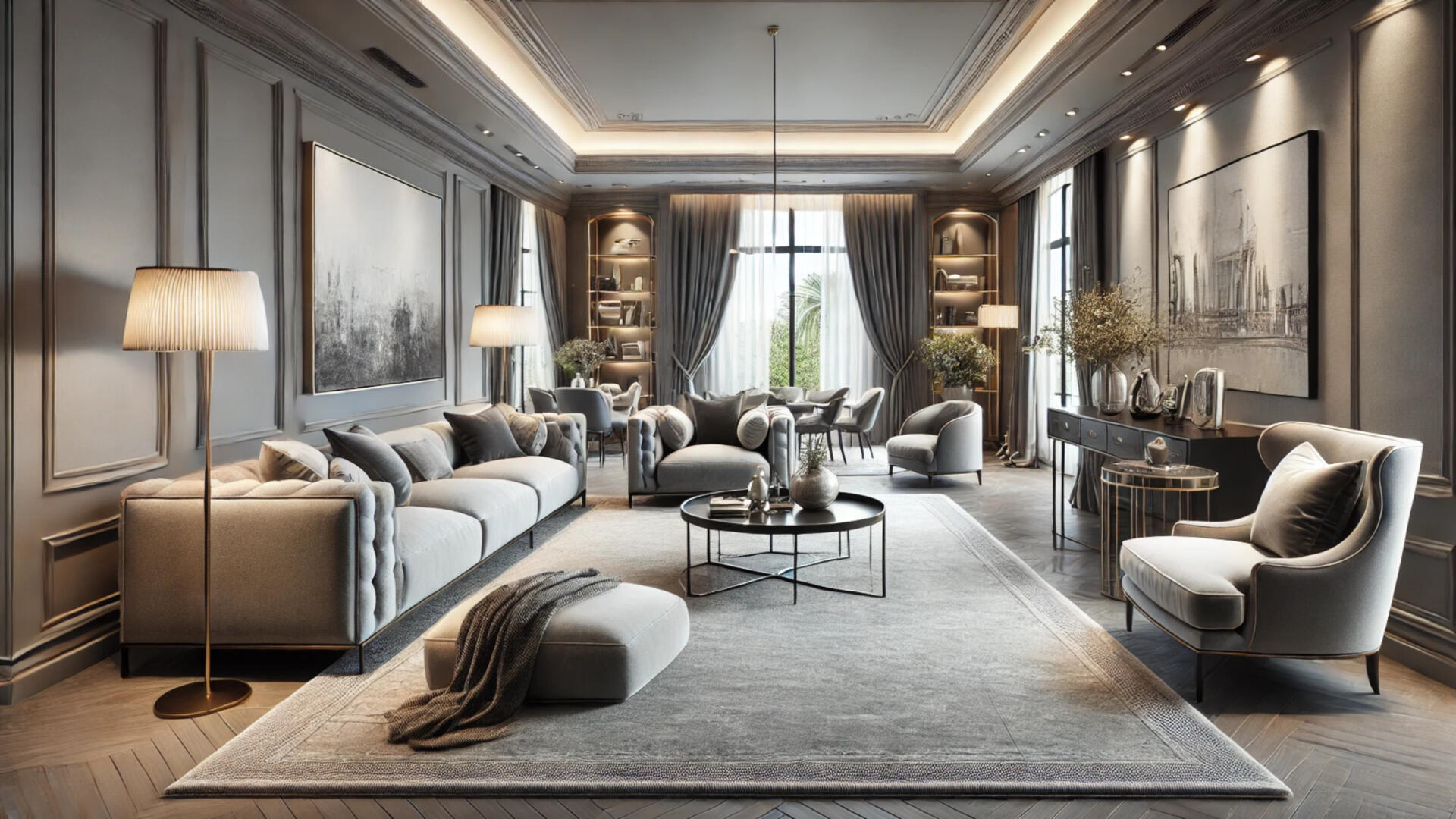
Tip 2: Mix Textures and Materials
Combining Different Textures While Layering Rugs
Layering rugs with varying textures adds depth and interest to your space, transforming a flat, ordinary room into a dynamic and inviting environment. When different textures are combined, they create a tactile experience that can enhance the overall aesthetic and comfort of your home. Here’s why texture matters in DIY home decor and how you can effectively combine different materials:
Wool Over Jute
Why It Works: The softness of wool contrasts beautifully with the rough, earthy texture of jute. This combination is perfect for creating a cosy yet grounded feel in a room.
Where to Use It: Ideal for living rooms or bedrooms where you want to balance comfort with a natural, rustic touch. Place a large jute rug as the base and layer a smaller, plush wool rug on top in the centre.
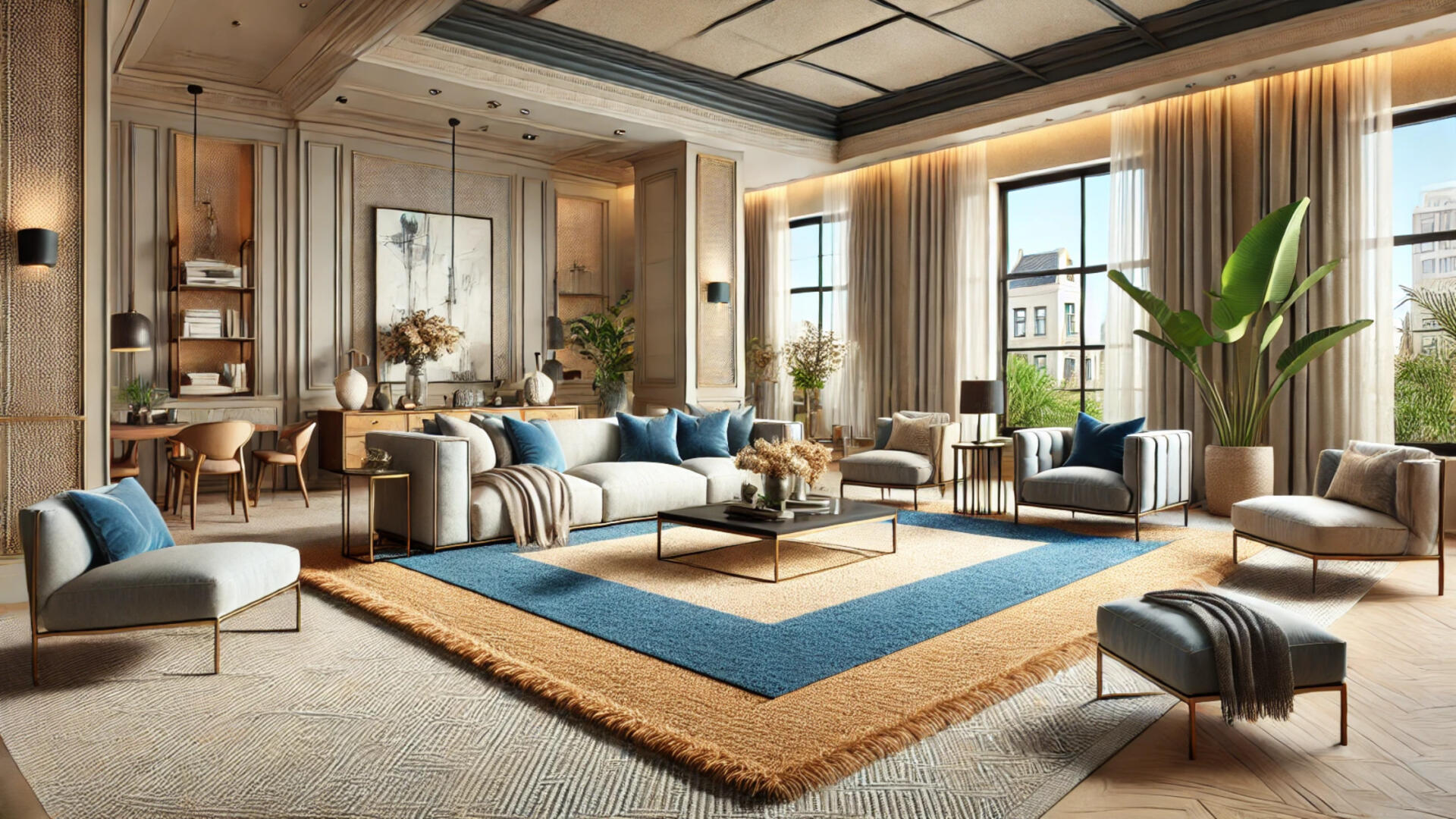
Silk Over Wool
Why It Works: Silk rugs add a touch of luxury and shine, while wool rugs provide warmth and durability. This combination is excellent for creating a sophisticated and elegant look.
Where to Use It: Best suited for formal living rooms or master bedrooms where a touch of elegance is desired. A silk rug can be placed over a larger wool rug to create a focal point and draw attention to a specific area.
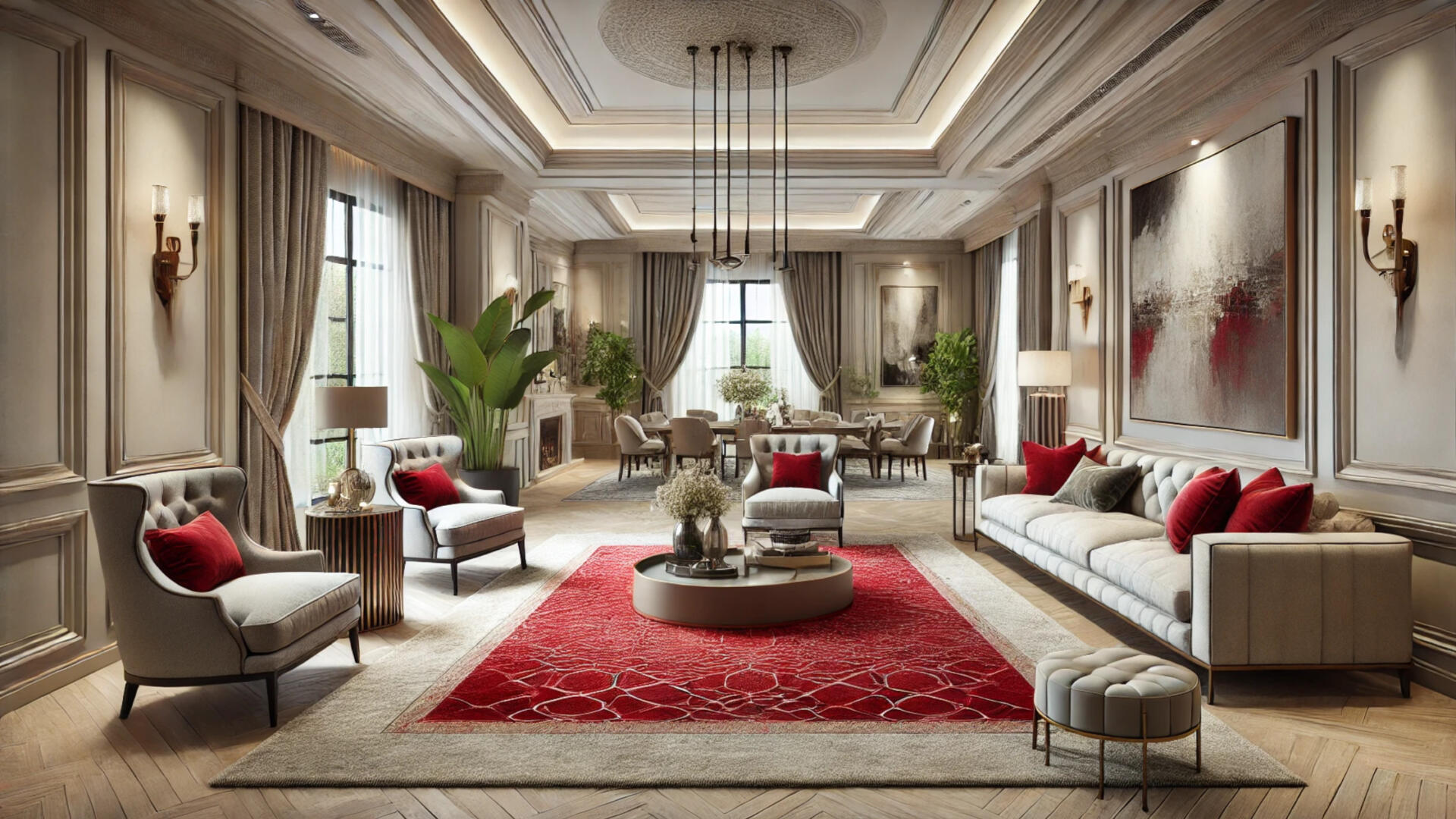
Cotton Over Seagrass
Why It Works: The smooth, soft texture of cotton complements the coarse, natural texture of seagrass. This combination adds a casual, beachy vibe to a room.
Where to Use It: Perfect for sunrooms, casual living spaces, or even outdoor areas. Layer a durable seagrass rug with a bright, patterned cotton rug to add color and comfort.

Shag Rug Over Flat-Weave Rug
Why It Works: A shag rug’s deep pile adds a plush, cosy feel, while a flat-weave rug offers a stable base with a simpler texture. This combination creates a luxurious, inviting space.
Where to Use It: Ideal for living rooms or bedrooms where you want to create a sense of warmth and comfort. Place a large flat-weave rug first, then layer a smaller shag rug where you relax most.

Tip 3: Play with Design and Colour
Pattern Mixing
Incorporating various patterns and colors into your rug layering strategy can elevate the design of any room, making it vibrant and dynamic. However, mixing patterns without clashing requires a thoughtful approach. Here are some guidelines and examples of successful combinations:
Geometric Patterns with Florals
Why It Works: The structured nature of geometric patterns contrasts nicely with the organic, flowing lines of florals, creating a balanced and harmonious look.
Example: A large geometric rug with bold, angular shapes can be layered with a smaller floral rug featuring delicate, curving lines. The floral pattern softens the geometric edges, making the space feel more inviting.

Stripes with Solids
Why It Works: Stripes are a versatile pattern that can add visual interest without overwhelming. Pairing them with solid colors creates a clean, modern look.
Example: A wide-striped rug in contrasting colors like black and white can be placed under a solid-colored rug in a bright hue like red or blue. The solid rug adds a pop of color, while the stripes provide a graphic element that anchors the design.
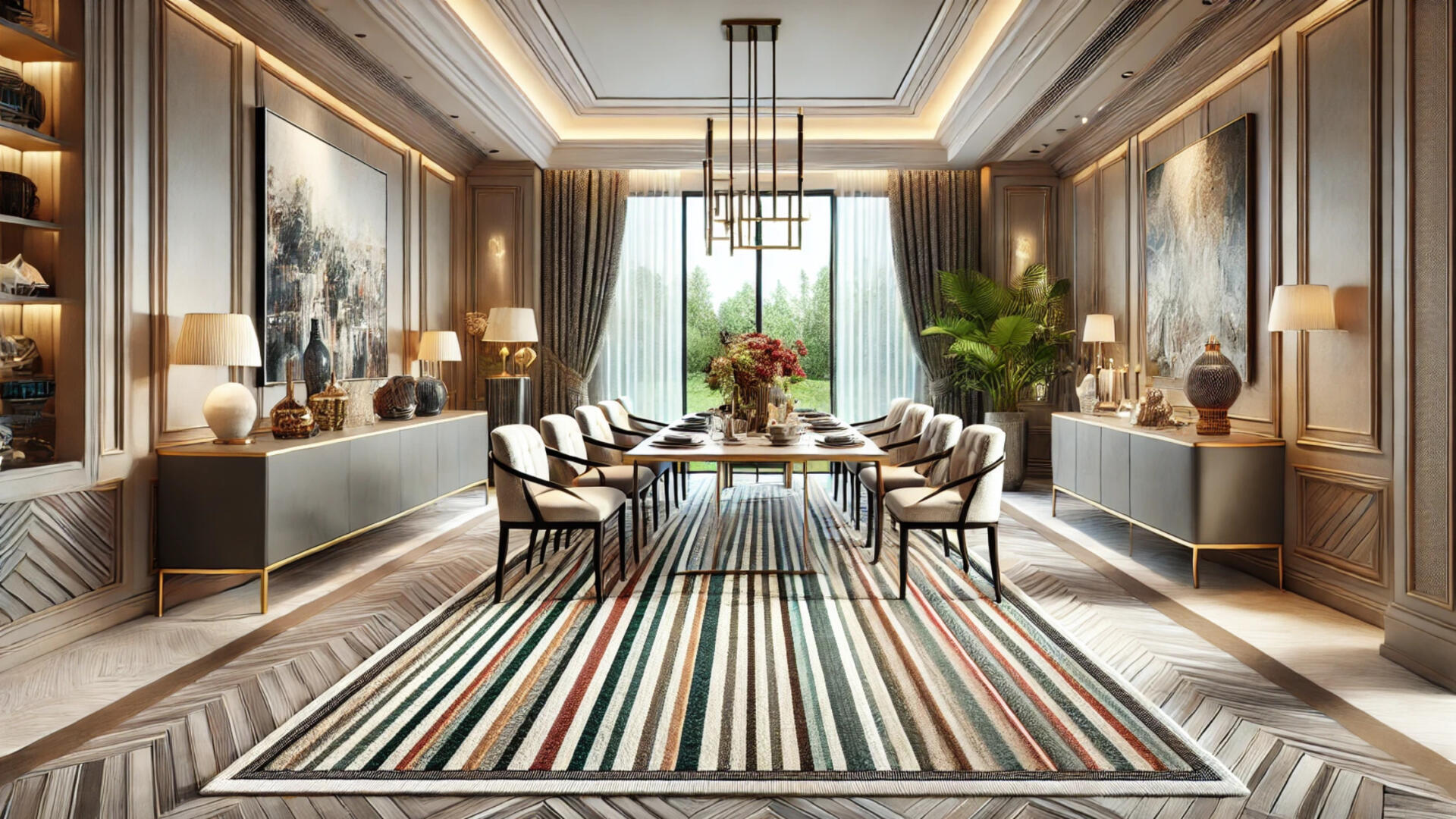
Tribal Patterns with Neutral Solids
Why It Works: Tribal patterns often feature intricate designs and bold colors. Balancing them with neutral solids helps highlight their unique characteristics without making the space too busy.
Example: A vibrant tribal-patterned rug can be layered over a large, neutral-colored rug in shades like beige or grey. The neutral base allows the tribal pattern to stand out and become a focal point.
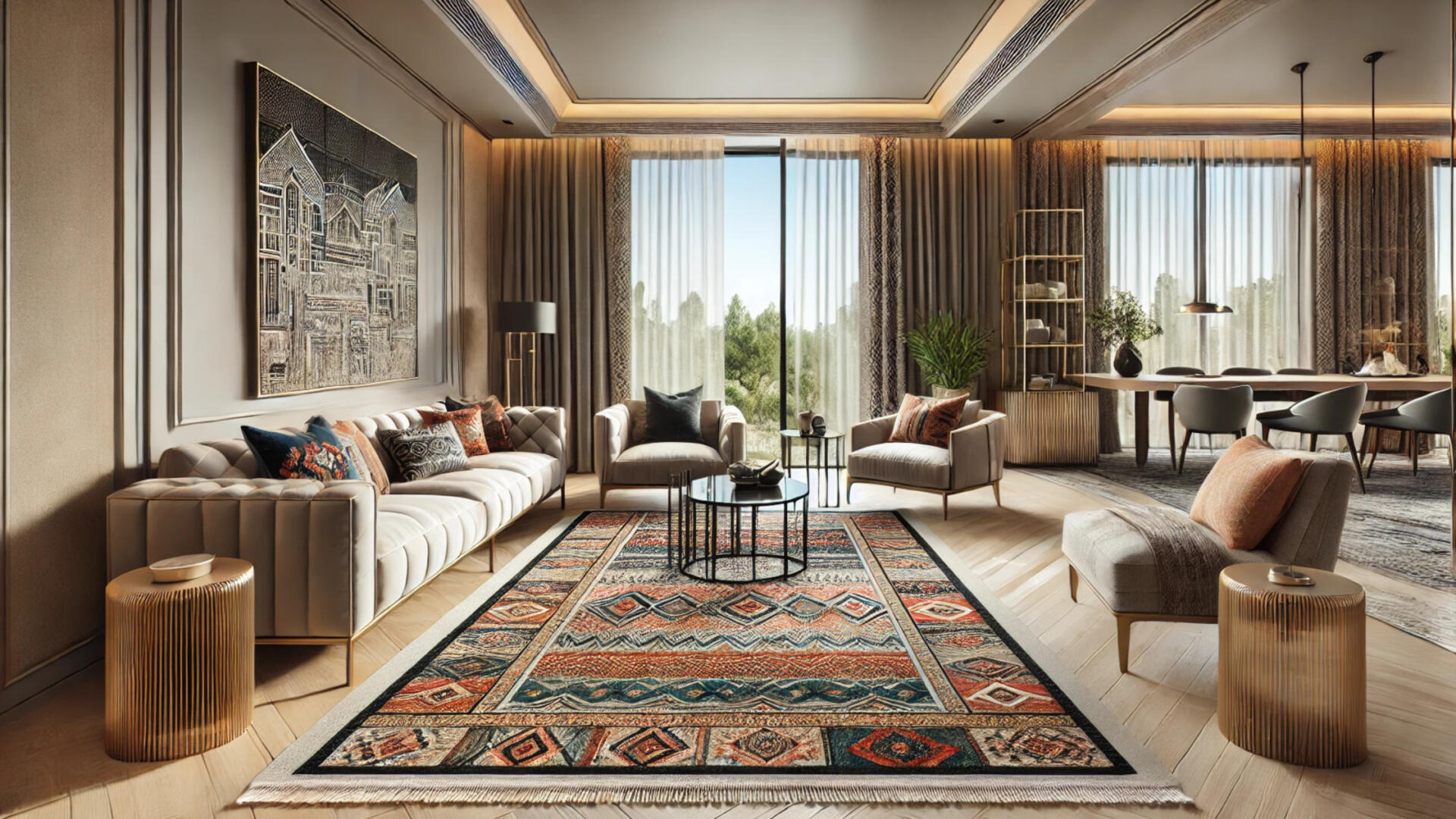
Polka Dots with Stripes
Why It Works: Polka dots and stripes are both classic patterns that can complement each other when done correctly. The key is to ensure they share a common color palette.
Example: A rug with playful polka dots in muted tones can be layered with a striped rug in matching colors. This combination adds a fun, whimsical touch to the room without clashing.
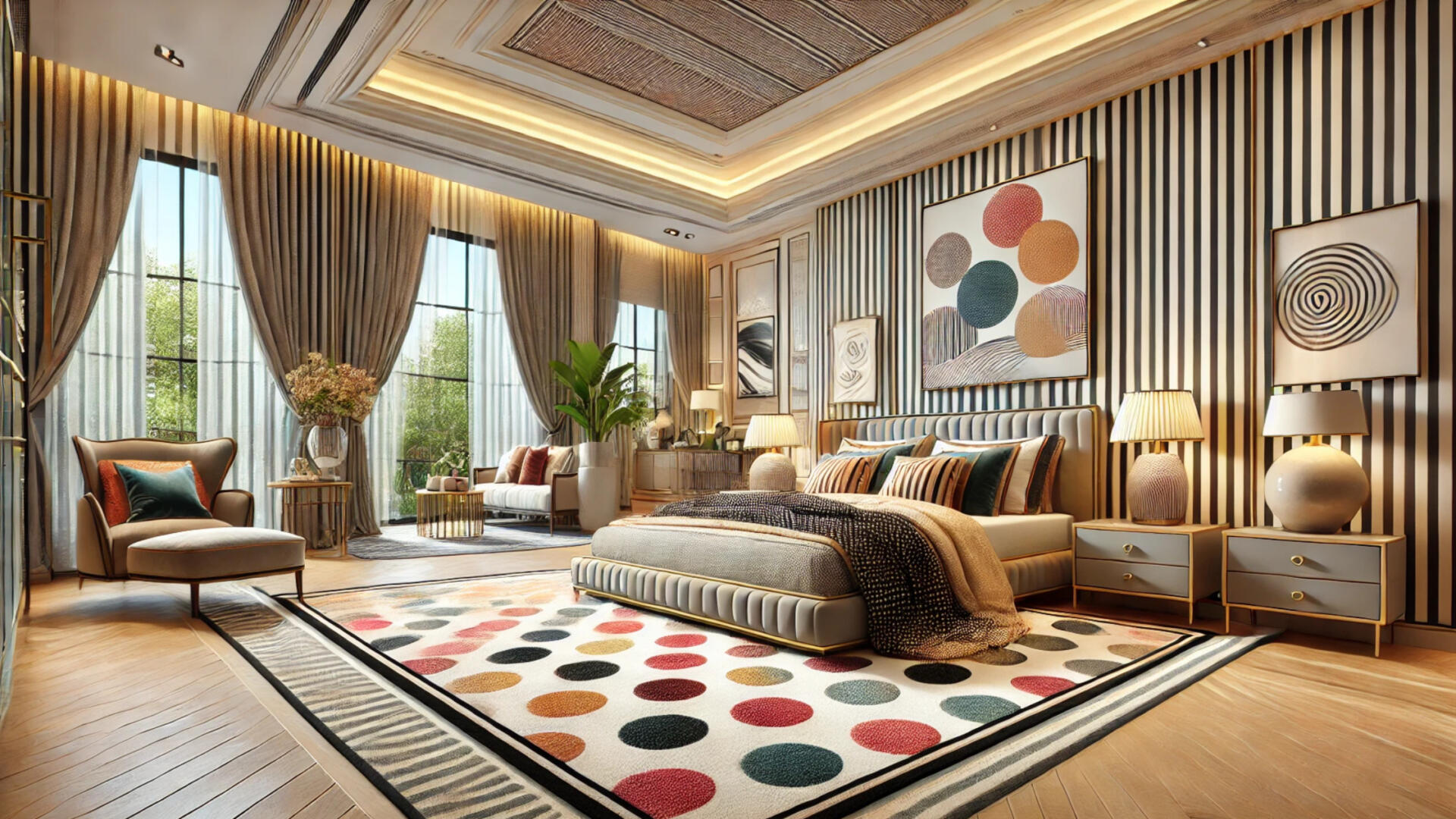
Tip 4: Size and Shape Matters
Proportions in Rug Layering
Achieving the right proportions in rug layering is crucial for creating a visually balanced and harmonious space. Each layer should complement the others in size and scale to avoid overpowering or underwhelming the room. Here’s how to choose the right size for each layer when layering rugs:
Base Rug: Establishing the Foundation
Consider Room Size
Why It Matters: The base rug sets the foundation for the entire room, so its size should be proportional to the space it occupies. A rug that’s too small can make the room feel disjointed, while one that’s too large can overwhelm the space.
How to Choose: Measure the dimensions of the room and select a rug that allows for adequate coverage without crowding the edges. Ideally, the rug should extend beyond the furniture to anchor the seating area.
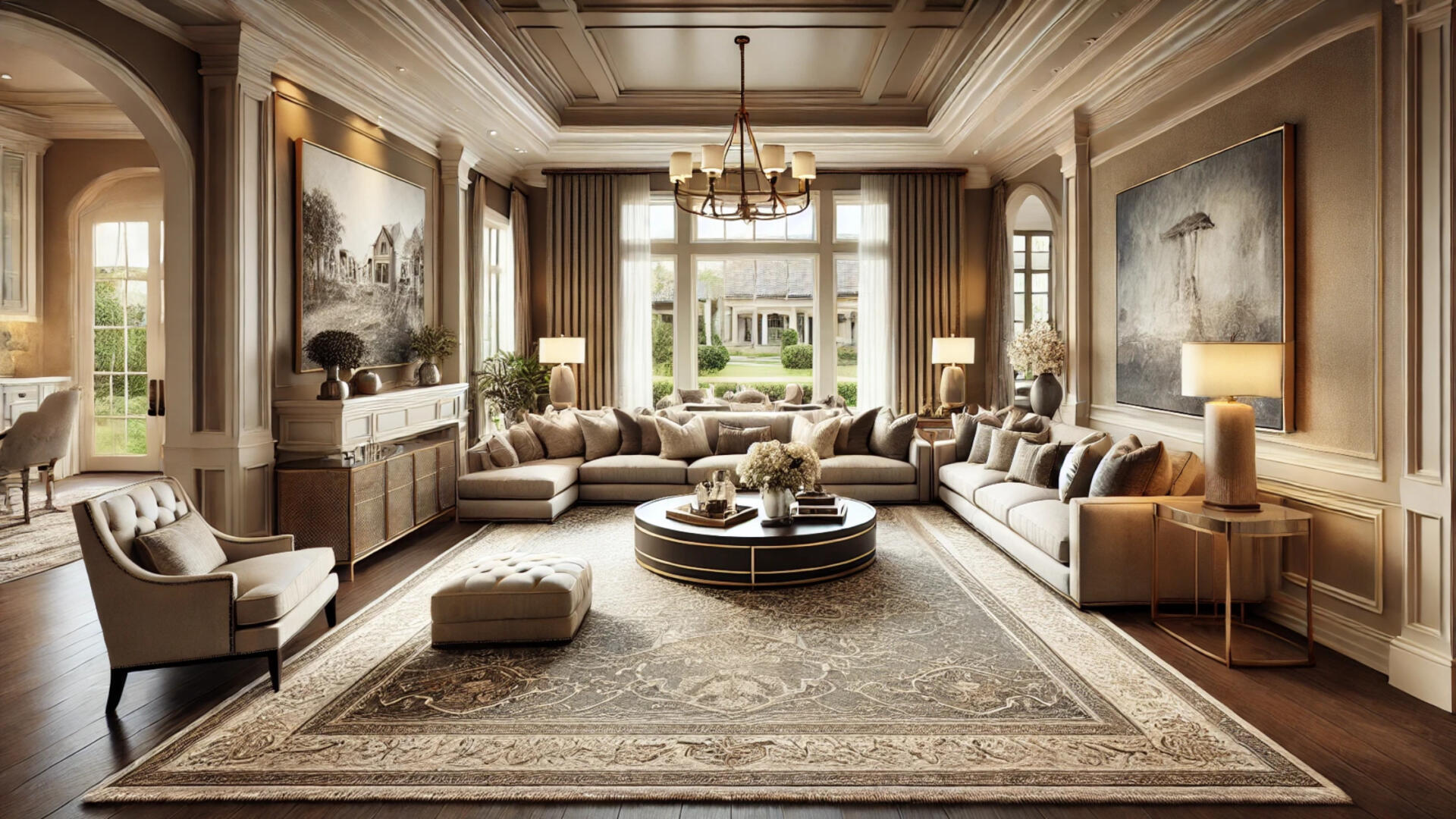
Define Zones
Why It Matters: In open-plan spaces, a large rug can help define different zones and create visual boundaries between areas such as the living room, dining area, and kitchen.
How to Choose: Determine the primary function of each zone and select a rug size that accommodates the furniture arrangement within that area. Ensure there’s enough space between the rug and the walls to maintain a balanced look.

Layered Rug: Adding Depth and Interest
Contrast in Sizes
Why It Matters: The layered rug should be smaller than the base rug to create a visually appealing contrast in sizes. This contrast adds depth and dimension to the room, drawing attention to the layered arrangement.
How to Choose: Select a rug that is proportionate to the base rug but slightly smaller in size. The layered rug should fit comfortably within the boundaries of the base rug, leaving a visible border of the base rug around the edges.
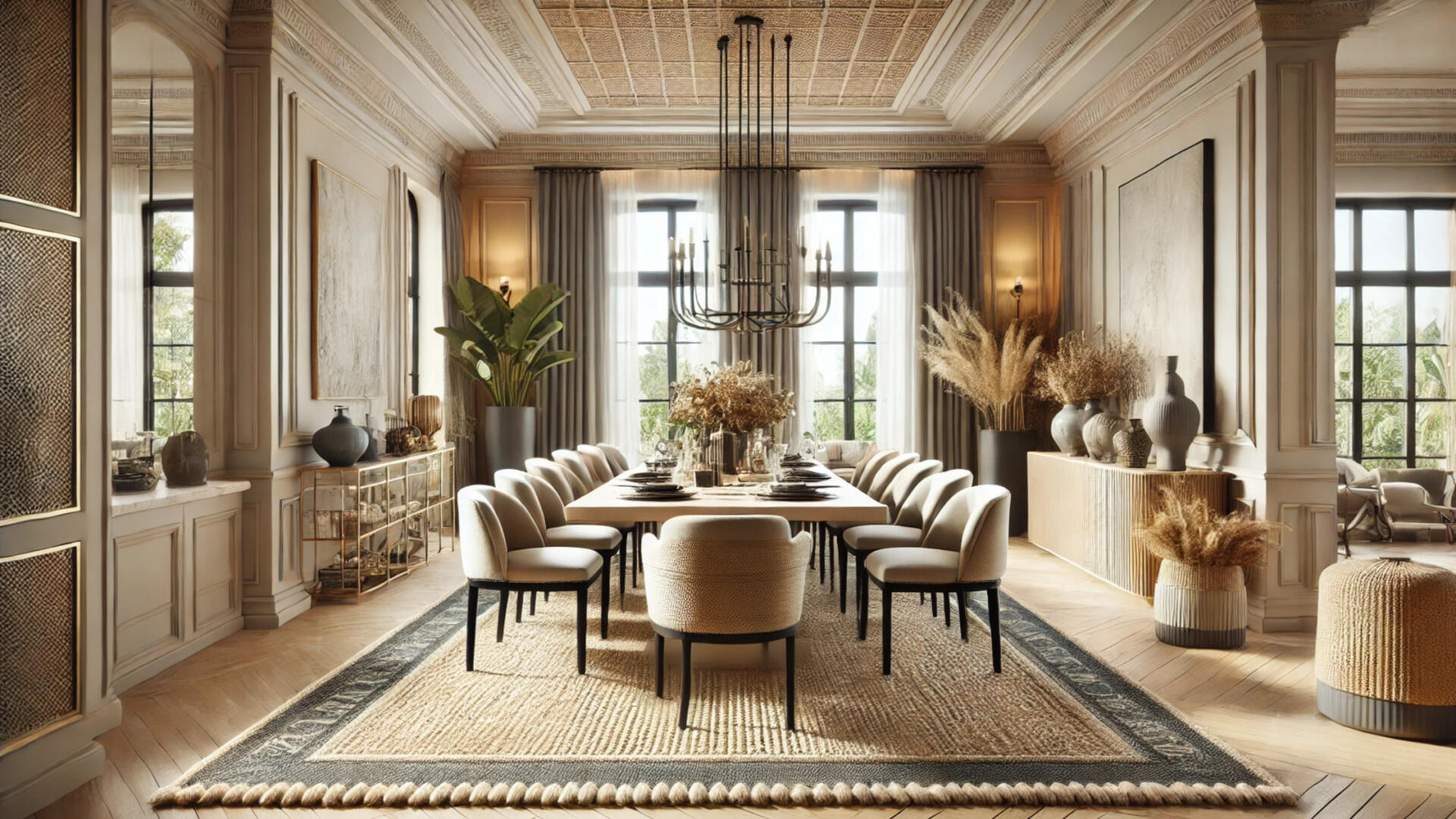
Focus on Placement
Why It Matters: The placement of the layered rug determines its impact on the room’s overall design. Placing it strategically can highlight key furniture pieces or create visual interest in specific areas.
How to Choose: Position the layered rug in a way that complements the furniture arrangement and serves a functional purpose. For example, place it under a coffee table to anchor the seating area or beneath a dining table to define the dining space.
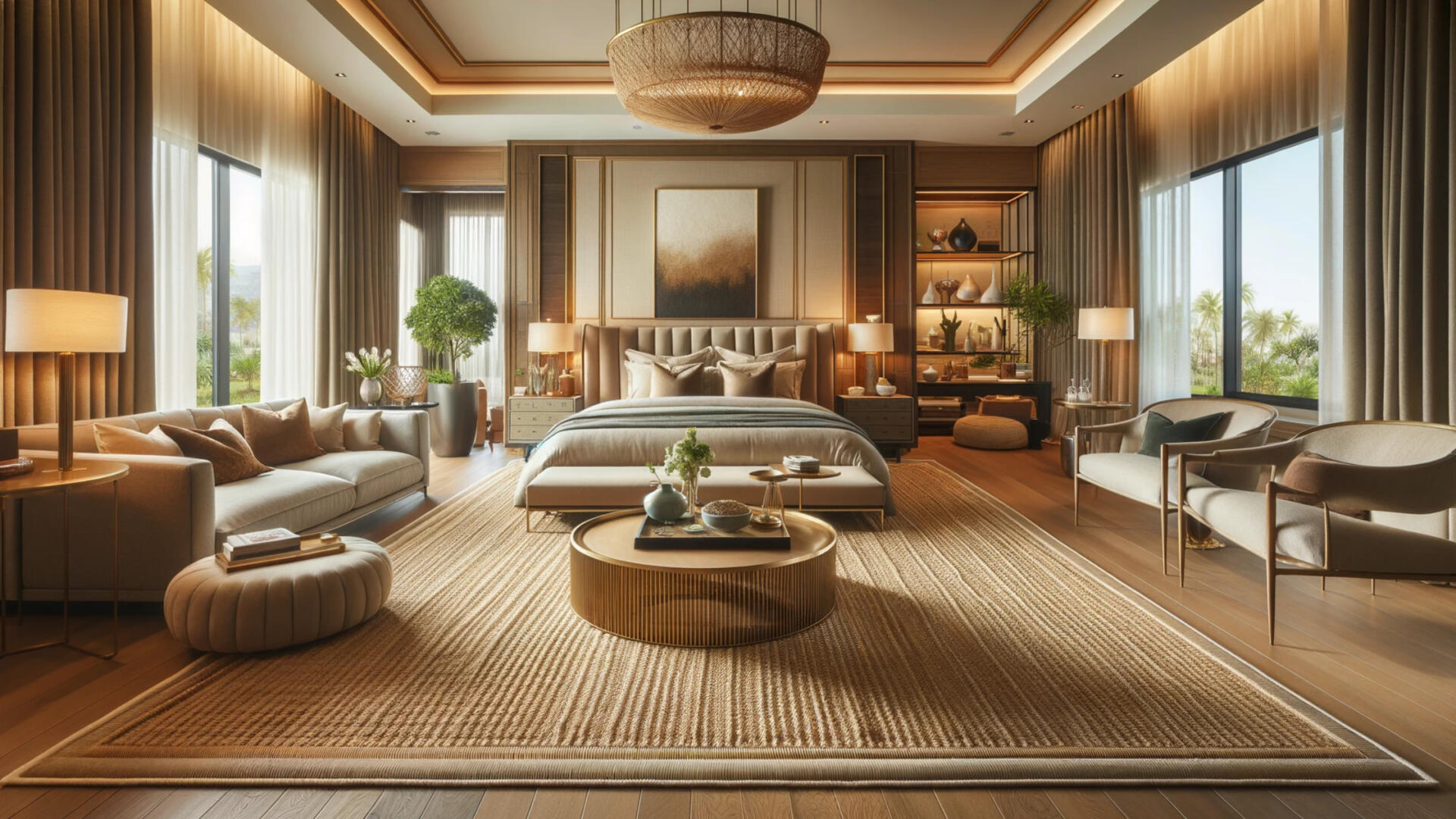
Balance with Furniture
Why It Matters: The layered rug should harmonize with the surrounding furniture pieces to create a cohesive look. Its size and placement should complement the scale of the furniture without overpowering it.
How to Choose: Ensure there’s enough space between the layered rug and the furniture to maintain balance and proportion. The rug should frame the furniture arrangement without engulfing it, allowing the pieces to stand out.

Examples of Size and Scale in Rug Layering
Living Room
Base Rug: Choose a large area rug that accommodates the seating area, with all furniture legs resting comfortably on the rug.
Layered Rug: Add a smaller accent rug in front of the sofa or under the coffee table to define the central gathering space.

Bedroom
Base Rug: Opt for a rug that extends beyond the bed on all sides, creating a soft landing for your feet when getting out of bed.
Layered Rug: Place a smaller rug at the foot of the bed to add warmth and texture, creating a cosy focal point.
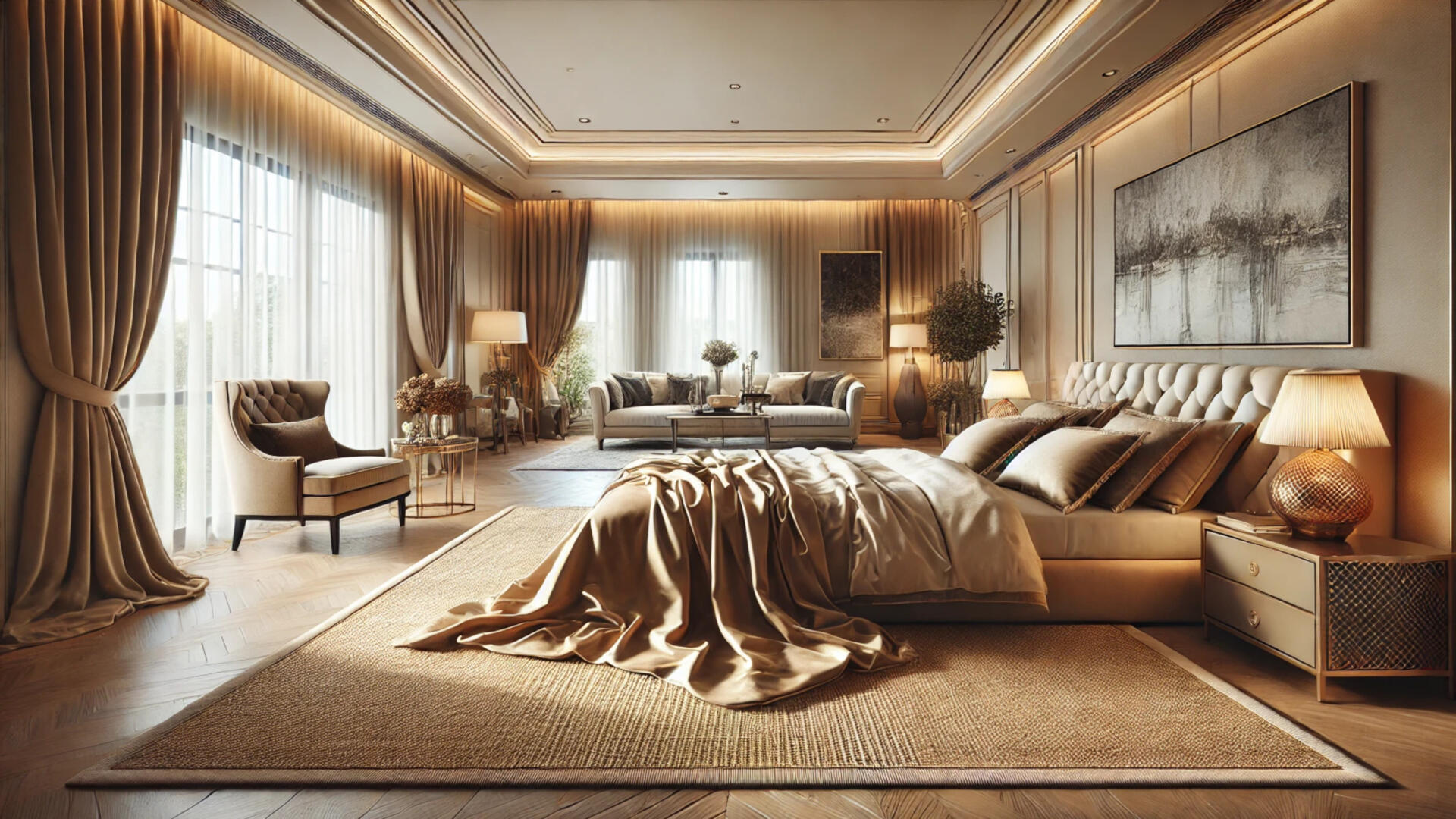
Dining Room
Base Rug: Select a rug large enough to accommodate the dining table and chairs, with ample space for movement around the table.
Layered Rug: Add a smaller rug underneath the table to enhance the dining area and provide additional visual interest.
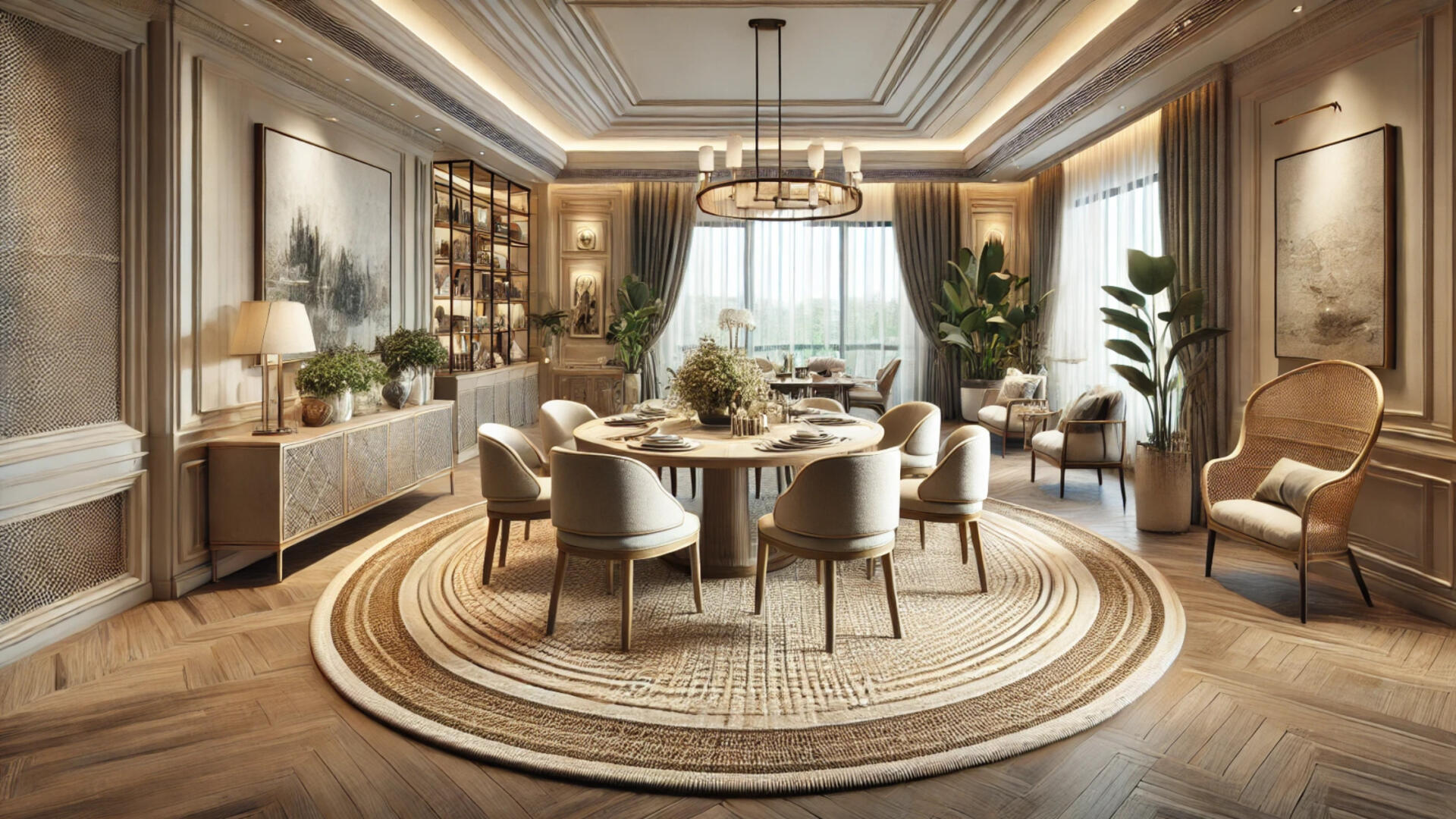
Tip 5: Upcycling Old Rugs
Rug Refinishing
Why It Works: Faded or stained rugs can be given a fresh look through refinishing techniques, such as dyeing or painting. If layering, an old rug can be placed below, with a bold coloured rug on top, to complement the faded material.
How to Do It: Choose a dye or paint that is suitable for the rug’s material. Apply the dye or paint evenly with a brush or sponge, following the manufacturer’s instructions. Experiment different shades with different layers and create unique designs for your home.

Layering rugs is one of the most easy diy home décor ideas that you can implement right now in your home. Visit our website to check out handmade rugs and carpets that go with your unique home look.
Frequently Asked Questions (FAQs)
Why should I layer rugs in my home?
- Layering rugs adds depth, texture, and visual interest to your space. It can also help define different areas within a room, create focal points, and enhance the overall design aesthetic of your home.
How do I choose the right rugs to layer?
- When choosing rugs to layer, consider factors such as complementary colors and patterns, varying textures, and the size and shape of the rugs.
- Aim for a cohesive look that balances bold statements with subtle accents.
Can I layer rugs in any room of my home?
- Yes, you can layer rugs in any room, from the living room and bedroom to the dining room and even the entryway.
- Just ensure that the rugs you choose are suitable for the function and style of each space.
What are some practical tips for successful rug layering?
- To ensure successful rug layering, consider the placement of furniture, maintain balance and proportion, secure the rugs to prevent slipping, and regularly clean and maintain them to preserve their appearance and longevity.
Are there any DIY projects I can try with layered rugs?
- Absolutely! You can try DIY projects such as resizing old rugs, refinishing faded or stained rugs, repurposing remnants and scraps into cushion covers or wall hangings, or even creating unique patchwork rugs or braided accessories.


